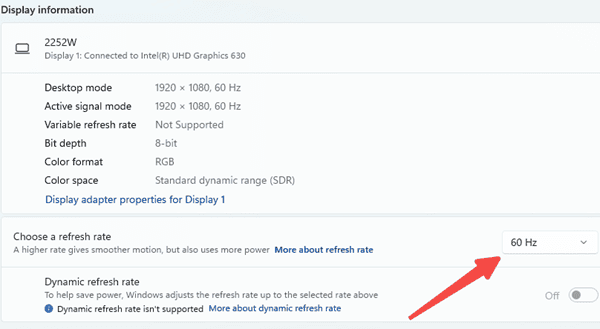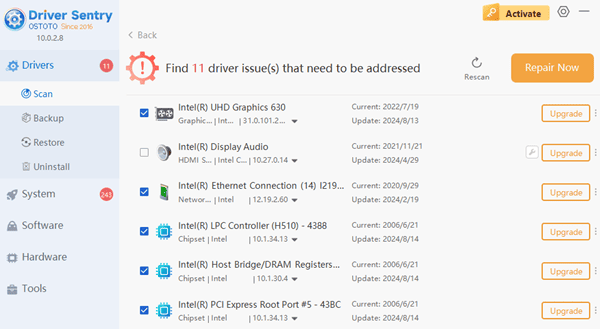
Have you ever dealt with a flickering computer screen? Whether it's occasional glimmers or persistent shaking, this issue not only ruins your viewing experience but could also strain your eyes. This guide breaks down common causes of monitor flickering and provides practical solutions to restore your display's normal performance.
1. Check Your Cable Connections
One of the simplest yet most overlooked culprits is a loose or damaged display cable. When the video signal doesn't flow smoothly from the computer to the monitor, it may cause flickering. This can happen with any type of cable, including HDMI, DisplayPort (DP), VGA, and DVI. A poor or unstable connection can cause disruptions, resulting in a flickering screen.
Fix:
Turn off your computer and monitor.
Ensure video cables are securely plugged in at both the monitor and the computer.
If you suspect a damaged cable, swap it with a new one to test if the flickering stops.
2. Adjust Screen Refresh Rate
Refresh rate refers to how many times per second your screen updates the image, and a low refresh rate can cause flickering, particularly if your monitor is struggling to update fast enough. Most modern monitors should run at 60Hz or higher, but anything lower may result in noticeable screen instability. If you're using a high-refresh-rate monitor, like one that supports 120Hz or 144Hz, using a lower refresh rate can make flickering more noticeable.
Fix:
Right-click on your desktop and select Display settings.
Scroll down and click on Advanced display settings.
Under the "Refresh rate" section, select 60Hz or higher (try 75Hz/120Hz if your monitor supports it).
Click Apply to test changes and check if the flickering has stopped.

3. Update/Roll Back Graphics Drivers
Outdated or incompatible graphics drivers often trigger flickering, especially after system updates or changes. A graphics driver might become unstable after being updated, or it may not be compatible with your hardware or operating system.
Fix:
To update drivers:
Install driver management software like Driver Sentry.
Click Scan to detect outdated drivers.

Select Upgrade for your graphics driver.

To roll back drivers (if flickering started after an update):
In Driver Sentry, click the three dots by your graphics driver. Choose Roll Back and follow prompts.
4. Disable Adaptive Brightness
In some cases, the adaptive brightness feature in Windows can cause flickering-like behavior. This feature automatically adjusts the screen's brightness depending on ambient light conditions, but it can also lead to constant brightness changes that may appear as flickering.
Fix:
Open Control Panel and go to Power Options.
Click on Change plan settings for your current power plan.
Click on Change advanced power settings.
Under Display, find the Enableadaptive brightness option and set it to Off for both battery and plugged-in modes.
Click Apply, then OK.

5. Check for Hardware Issues
If none of the above solutions worked, it's time to consider possible hardware issues. The flickering could be caused by a defective monitor, graphics card, or even power supply issues.
Fix:
Test with another monitor: If possible, connect your computer to another monitor. If the flickering stops, then the problem likely lies with your original monitor.
Inspect the graphics card: Check your graphics card to make sure it's seated properly in its slot. If you have another computer available, try the card in that system to see if the flickering persists.
Check the power supply: Ensure your monitor is plugged into a stable power source. For high-end graphics cards, make sure your power supply can handle the load. Try connecting the monitor to a different power outlet or use a voltage stabilizer to see if this resolves the issue.
Most flickering issues can be resolved through basic troubleshooting. If problems persist, consult a technician or consider hardware replacement. With these solutions, you should be back to enjoying stable, eye-friendly screen time in no time!
See also:
How to Fix Stuttering in Games
Fix Camera Error Code 0xa00f4244 on Windows 10/11
Why does my monitor say no signal when computer is on